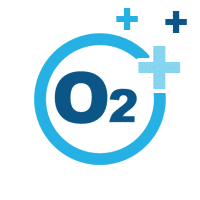Brain Damage
Brain damage is an injury that causes the deterioration or destruction of brain cells. Brain damage includes both Traumatic Brain Injury (TBI), caused by an external force, and Acquired Brain Injury (ABI), occurring at the cellular level. The severity of damage can vary based on they type of injury, but can range from headaches, confusion, and memory problems, to more severe cognitive, behavioral, and physical disabilities.
Benefits of Hyperbaric Oxygen Therapy for Brain Damage:

Increases Amount of Oxygen in the Blood
Stimulates development of new blood vessels from pre-existing vessels as well as the natural development of new blood vessels.

Reduces Inflammation & Swelling
Suppresses the cellular activity of the immune system which triggers swelling when an injury or damage to the body occurs. While this reaction is meant to start healing and protect from injury it can result in secondary injury, pain, and prolonged recovery time.

Preserves, Repairs, & Enhances Cellular Functions
Boosts cellular metabolism, promotes rapid cell reproduction, and enhances collagen synthesis. Collagen is a protein in connective tissues like skin.
Key Research on Hyperbaric Oxygen Therapy for Brain Damage
Recent News on Hyperbaric Oxygen Therapy for Brain Damage
Concussed Student-Athlete Program leading battle against brain injuries
Article cited by Alex Peterman Special to The Post DELRAY BEACH — How does one heal that which cannot be seen? It’s a riddle the Help Our Wounded (HOW) Foundation of South Florida is solving with science, targeting the most elusive of wounds that afflict the human...
9/11 Tribute Honoring All Who Defended America
In this 9/11 tribute, Extivita honors all service members who have defended our country & highlights the unfortunate truth about veteran suicide. Hyperbaric Oxygen Therapy is breathing new life into injured veterans and saving lives. If you know someone suffering...
Gaining Independence from Suicidal Ideation
Treat Brain Wounds with Hyperbaric Oxygenation and other Alternative Therapies "VA’s top clinical priority is preventing suicide among all Veterans — including those who do not, and may never, seek care within the VA health care system.” Yet nowhere in their...
Related Indications
Schedule a Consultation
Additional Research
High-Dose Intravenous Ascorbic Acid: Ready for Prime Time in Traumatic Brain Injury?
Abstract Traumatic brain injury (TBI) is one of the leading public health problems in the USA and worldwide. It is the number one cause of death and disability in children and adults between ages 1-44. Despite efforts to prevent TBIs, the incidence continues to rise....
The role of pulsed magnetic fields in the management of concussion and traumatic brain injury
Abstract Traumatic brain injury (TBI) is a complex clinical phenomenon. (Raji) The classic designations of mild, moderate, or severe TBI are based on the acute clinical presentation and do not necessarily predict the long-term outcome. The long held assumption that...
Treatment of Traumatic Brain Injury With Hyperbaric Oxygen Therapy
Hyperbaric oxygen therapy (HBOT) is defined as the use of oxygen at higher than atmospheric pressure for the treatment of underlying disease processes and the diseases they produce. Modern HBOT in which 100% O2 is breathed in a pressurized chamber dates back to the 1930s, when it was first used for treatment of decompression illness in divers. There are currently 13 FDA-approved uses for HBOT, including decompression illness, gas gangrene, air embolism, osteomyelitis, radiation necrosis, and the most recent addition—diabetic ulcers. HBOT can dramatically and permanently improve symptoms of chronic TBI months or even many years after the original head injury. This assertion is generally met with skepticism within the medical establishment because we have been taught for generations that any post-concussion symptoms persisting more than 6 months or so after a head injury are due to permanent brain damage that cannot be repaired.
